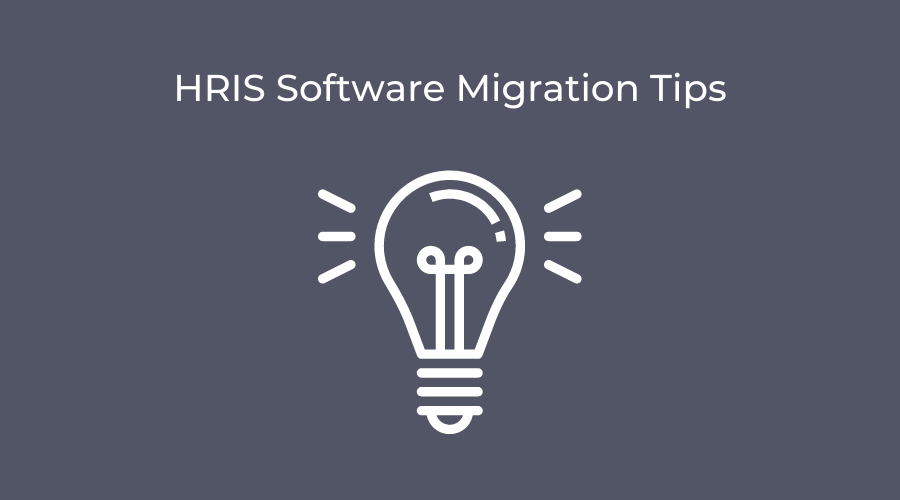
HRIS Software Migration Tips
Due to workforce growth and changing business objectives many companies find themselves transitioning to a new Human Resources Information System. The transition process from start to finish can include sourcing new software, navigating the sales process, mapping the implementation plan, data transfer or data conversion, and employee training.
It can be overwhelming if you haven’t been through the process before. Ensuring you choose the right software to fit department needs and deciding what data to pull through is complicated, especially considering compliance and regulatory requirements.
Here are 7 tips for your next HRIS software migration.
Needs Analysis
First, your team needs to identify the reason for the migration. Are you looking to move to a better user interface? Do you need more efficient reporting tools? Do you want employees to have higher engagement? Start by creating a list of your top ten requirements. Get the whole team involved to allow for as much clarity and input as possible. A new software may provide an opportunity to contemplate a more progressive use of data.
Think about the ways your HR team can use an HRIS to influence the business goals. Are you hoping to track diversity? Do you need to easily pull data analytic visuals to show the value of your strategic plans? Do you need an applicant tracking system to help you fill roles quickly? Most HRIS companies offer a multitude of products which can increase the cost quickly. You will want to ensure that you have your biggest needs at the forefront.
Identify a Budget
Meet with executives to determine cost limitations. You will want to go into the sales process with a good idea about your spending limit. This a significant investment for your company; you will want to guarantee the executive team is fully supporting the transition and investment expense.
Sales Team Antics
The sales managers at these companies are good at what they do. They are going to show you a demo that will leave you pulling out the checkbook ready to sign on the dotted line. When that happens, take a step back. Treat this like buying a car. You need to test it out and seek plenty of outside input. Ask them to reveal a couple companies using their software in similar industries.
Reach out to those companies directly for honest feedback about the interface, implementation process, and customer service level. Read online reviews. Take your time. Resist the pressure to follow a strict sales deadline. Do your due diligence to make sure they are capable of what they are selling you on.
Data Transfer
Prior to making any moves take the time to clean up your existing data. Next, decide what data fields must be moved over to the new system as well as how many years of history your team regularly needs access to. You’ll want to make sure historical data comes with you. For information not being migrated, determine a storage location in the chance that you would need to reference it later.
Tackling Implementation
Taking on an HRIS implementation requires a team effort. Divide and conquer by assigning duties to subject matter experts in your department. Work with the HRIS software employees to create a reasonable timeline with clear expectations about what will be completed and when it will be completed by. Identify test users who will look through every tool of your new software and become well acquainted with the user capabilities.
Employee Roll Out
Some industries have more technologically literate employees than others. Determine where your employees’ abilities stand and plan strategically about how to communicate the change to them. If needed, hold training sessions to demo how employees can best utilize the new HRIS. Change is hard for most people, so be patient.
Monitor Progress
Once you are live with the new HRIS, track employee usage, check to make sure all the tools you agreed upon are all working properly, and pull data sets to audit for accuracy. I recommend, if you are able, to create a small window of overlap where you maintain access to the prior system for a few months. This can be extremely useful in the instance you need to reference back. Do not hesitate to get the implementation team back in if something isn’t going the way you expected.
Stephanie Mauney is freelance writer and content curator specializing in Human Resources.


